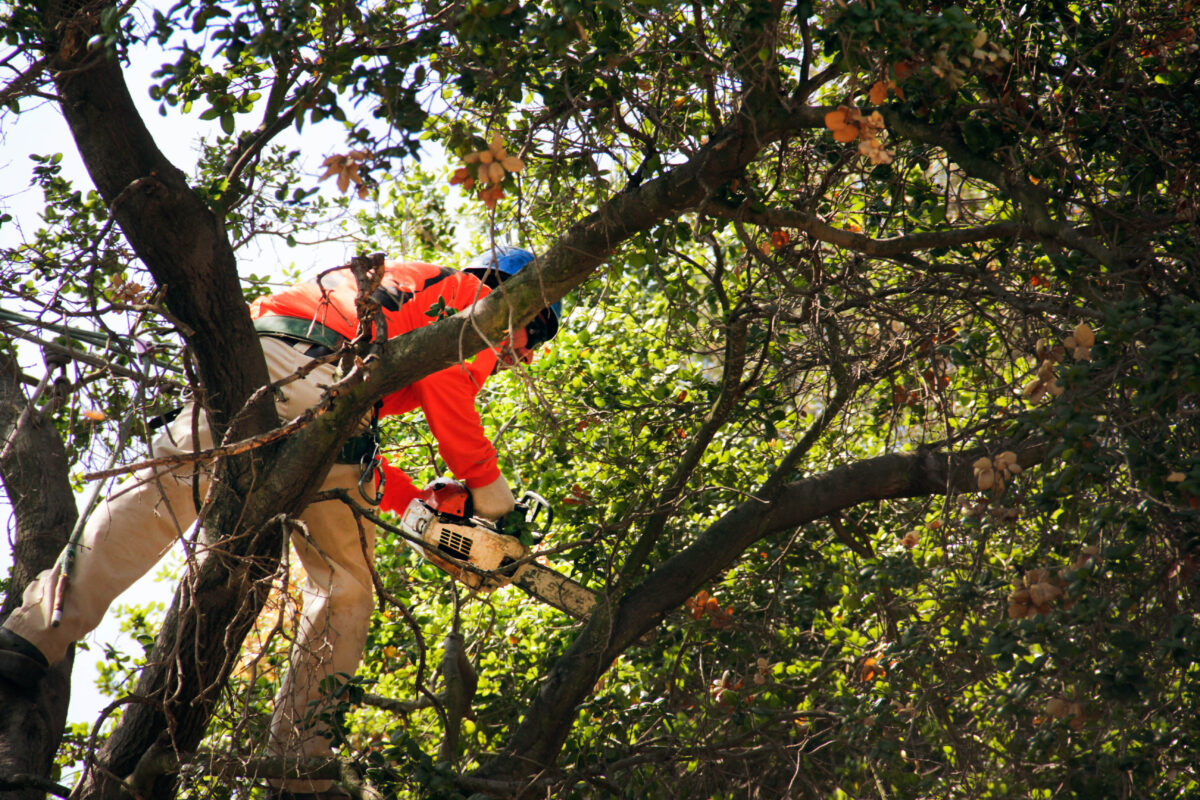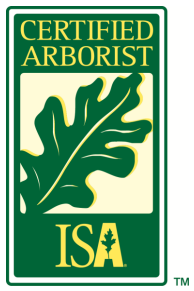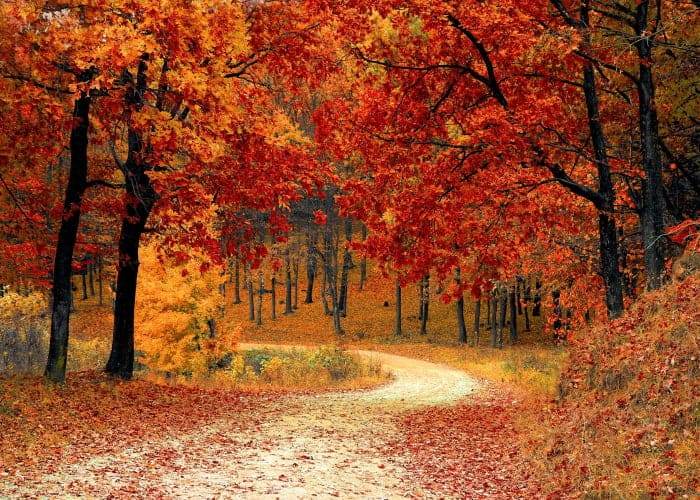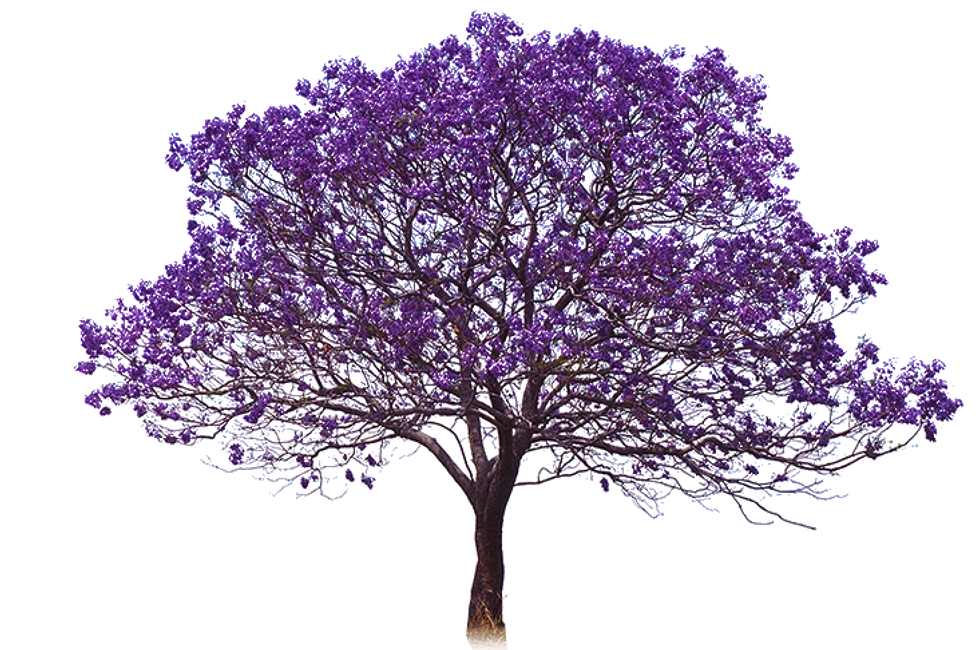Care of California Oaks
Native oaks, when young trees, are very tolerant of their environment and make excellent and
adaptable landscape assets. The mature native oak is an invaluable part of our environment but does
not tolerate many changes once established.
Architects, builders, homeowners, and others should be very careful in fitting their plans with these
magnificent giants. Any substantial change in the mature oak’s environment can weaken or kill an
oak, even a healthy specimen.
A good rule of thumb is to leave the tree’s root protection zone (RPZ) undisturbed. This area,
which is half again as large as the area from the trunk to the dripline, is the most critical to the oak.
Many problems for oaks are initiated by disturbing the roots within this zone.
A Word About Roots
Our native oaks have developed survival adaptations to the long, dry summers of most of California.
Primary to this survival is the development and characteristics of its root system. When an acorn
first sprouts, there is rapid root development and very little growth above ground.
This initial root is a tap root extending deep underground for dependable moisture. In fact, the
tree’s first few years are focused on establishing a deep sustaining root system. Once this has
happened, greater foliage and above-ground growth takes place.
As the oak grows, the tap root is outgrown by an extensive lateral root system that spreads
horizontally out from the trunk to and well beyond the dripline, sometimes as much as 90 feet. For
a mature oak, this horizontal root system is the primary supporter of the tree for the rest of its life.
It includes the important fine roots, which absorb moisture and nutrients. Most of the root system
occurs within the top three feet of soil. In shallower soil the root system is concentrated in an even
shallower zone, typically one to two feet below the surface.
As the oak matures, particularly in areas naturally dry in summer, deep-growing vertical roots form
off the laterals, usually within ten feet of the trunk. These sinker roots exploit deeper soil moisture
and add stability to an increasingly massive tree.
By the time a mature oak has established its elaborate root system – so well designed for its
environment and particular site conditions – it has lost the vigor of youth. It is less tolerant of
change and can less easily recover to support a fully developed living structure.
To protect a mature oak, pay particular attention to drainage, and avoid filling, trenching, or paving
near its root zone.
Fill Around Oaks
Soil and other materials placed on top of the natural soil level, called fill, are usually compacted.
They make the soil less permeable, thereby restricting or prohibiting the exchange of gases and
movement of water. Excessive moisture trapped by fill can also cause root and crown rot. Because
there is no guarantee that fill can be safely added around an oak tree, it is best to avoid tampering
with the natural grade, or to leave the natural grade within the root zone alone and use retaining
walls.
Drainage
Poor drainage is a common cause of oak tree deaths, since adequate drainage is critical to ensure a
proper balance of moisture, air, and nutrient to grow and survive. Too much moisture, particularly
in the warm months when natural conditions are dry, can smother the roots and encourage the
proliferation of crown and root rot fungi.
Another moisture threat to oak roots is presented by barriers such as concrete foundations and
footings, streets, and swimming pools downhill of oaks. These structures can dam underground
water, causing water to back up into a tree’s root zone and drown it.
Trenching
Trenching is an often-overlooked cause of tree death. Trenching usually occurs when underground
utilities are installed. Digging a trench for utilities within the RPZ of an oak can sever a significant
portion of a tree’s roots. Often, several trenches are opened by separate utilities. This multi-trenching is particularly destructive since it impacts a greater portion of the root system.
If utilities must impinge on the root protection zone of a native oak, the trench should be dug by
hand, avoiding roots, or utilities bored through the ground at least three feet below the surface.
Paving
Paving can cause the same problems associated with soil compaction. Paving, such as asphalt and
concrete, prevents water from soaking into the soil and impedes the exchange of gases between
roots, soil, and the atmosphere. In addition, paving usually requires excavation to create a stable
base and to allow for depth of paving material. This process compacts the soil and damages roots.
Decking placed on piers is much more compatible with mature oaks than paving.
Care of Established Oaks on Home Grounds
Oaks on home grounds require certain conditions to survive and prosper. Activities of concern to
the homeowner are planting near oaks, irrigation and feeding, pruning, installation of home
improvements, and disease and insect infestations.
Most native oaks in California evolved and prospered in an environment typified by a cool, moist
winter and a hot, dry summer. Under natural conditions, surface soils are wet during the cooler
months and become dry by summer. Natural vegetation growing beneath oaks flourishes during the
winter and spring and dies by early summer, creating the well-known golden-brown landscape of
California’s valleys and foothills.
Native oaks, however, remain green because their thick, leathery leaves and other adaptive features
reduce their water use. The homeowner should attempt to approximate the natural environment in
which these magnificent trees are originally found.
Planting Near Oaks
Only drought-tolerant plants that require no summer water should be planted around old established
oaks, and they should be planted no closer than six feet from the base of the tree. Do not plant
exotic grasses, ivy, azaleas, rhododendrons, or any other vegetation that needs summer irrigation.
Such plants develop thick mats of roots and thus inhibit the exchange of air and water the
established oak has grown used to.
There are a number of plants, some of which are native to California, that can be grown beneath
oaks. For an extensive listing of compatible plants useful for landscaping around oaks, contact the
California Oak Foundation.
In place of plants, other types of ground cover can be used to landscape beneath oaks. When
installed properly, cobbles, gravel, and wood chips are good examples of ground covers that do not
interfere with the roots’ ability to obtain oxygen and appropriate moisture.
Irrigating and Fertilizing
Native oaks usually do not require irrigation as they are well adapted to dry summer conditions.
Healthy oaks are even able to survive the excessively dry summers sometimes brought on by
California’s variable climate. But if an oak has been compromised, as when impervious surfaces
have been placed in the RPZ, occasional water may be helpful if done properly.
Oaks should be irrigated only outside of the RPZ. Under no circumstances should the ground near
the base of a native oak be allowed to become moist during warm weather periods. Moist, warm
soil near the base of a mature oak promotes crown and root rot.
Irrigation, if done, should be by the “deep watering method,” which consists of a slow, all-day
soaking only once or twice during the summer dry period. Frequent, shallow watering not only
encourages crown and root rot, it also results in the growth of ineffective shallow roots near the
surface, a needless waste of the tree’s energy.
If oaks need supplemental watering, it is best to apply the water at times that lengthen the normal
rainy season, so the normal dry period in the middle to the end of summer is preserved. For
example, additional irrigation would be appropriate in May and September, while leaving the area
under the tree dry in July and August.
Mature oaks usually need little or no supplemental fertilization. Light fertilization may be
appropriate in landscaped situations to replace nutrients supplied by leaves and other litter that
normally accumulates under an oak in its native environment. If leaves are allowed to remain under
trees, they eventually break down and supply nutrients.
Fertilization should only be done if growth is poor. Fertilizers should be applied to the entire RPZ,
ideally in late winter or early spring. Trees that have recently undergone severe pruning or root
damage should not be fertilized for at least six months.
Often, when an oak tree shows yellowing leaves, one thinks it lacks nutrients. Generally, this is not
the case. More likely, the tree is suffering from root or crown rot. When an oak appears unhealthy,
consult a certified arborist to determine the cause.
Pruning
Excessive pruning or thinning of limbs may expose interior branches to sun damage, may simulate the tree to produce succulent new growth that is subject to mildew, and, in some cases, may cause a decline in vigor or may kill a tree. Only dead, weakened, diseased, or dangerous branches should be removed.
Necessary pruning should be done during June, July, August and September for evergreen species. Recent research has shown that tree paint, wound dressings, and sealing compounds do more harm than good.
Pruning should be performed by a certified arborist according to the pruning standards of the
Home Improvement
The installation of home improvements should be done with caution when oaks are located nearby.
Trenching severs roots, and impervious surfaces placed over roots may result in the death of the
oak. A swimming pool placed downhill of oaks can act as a dam and cause an oak to drown in
saturated soil.
Great caution should be taken and a certified arborist consulted before proceeding with
improvements that impact on the root protection zone of any valued native oak.
Diseases
When growing under natural conditions, native California oaks are relatively tolerant of most
diseases. However, they are subject to several problems when disturbed or hampered by frequent
summer watering.
The two oak diseases most often encountered in irrigating settings are crown rot and oak root
fungus. Both attack trees weakened by disturbance or improper care.
Crown Rot
This is one of the most common and serious diseases of oaks in home plantings. Infected trees
decline slowly over a period of years. The disease, caused by a microscopic fungus, is made worse
by saturated soil and poor soil aeration.
Symptoms of this disease are a general decrease in tree vigor, twig die-back and wilting, abnormally
yellow leaves, and formation of lesions on the bark accompanied by oozing of dark-colored fluid.
In most cases people notice crown rot too late for successful treatment. However, if the disease is
caught in the early stages a tree can be saved. Comprehensive treatment is best left to a qualified
expert. The following measures usually benefit the tree:
1) Remove lawn and other plants that require summer irrigation from within the RPZ.
2) Remove soil and all other debris that has accumulated against the trunk.
3) Do not water within the RPZ during the summer except under unusual conditions
when advised by a certified arborist.
4) Improve drainage around the tree, and make sure all water drains away from the
trunk.
Oak Root Fungus
This oak fungus, also known as Armillaria root rot, is found in the root systems of most oaks in
California. Our oaks experience little damage from this fungus under natural, dry summer
conditions. However, when oaks are watered in the summer or weakened by other impacts, the tree
can suffer damage from the fungus.
Symptoms shown by an infected oak include die-back of branches and yellowing and thinning of
foliage. The fungus itself may appear as a white, fan-like growth with rhizomorphs and mushrooms.
Prevention of damaging conditions is the only sure action that can be taken against this disease.
Avoid summer irrigation near oaks. Prevent mechanical damage to major roots or root crown. As
with crown rot and other tree diseases, it is recommended that a certified arborist be consulted.
Mistletoe
This parasitic plant grows on the branches of many oaks and can cause structural weaknesses that
make branches more vulnerable to breakage. Its sticky seeds are spread from one tree to another by
birds. The seeds germinate under favorable conditions, and rootlike structures find their way
through the bark, ultimately becoming attached to the oak and tapping into the water-and-mineral conducting tissues of the tree.
Small infestations can be controlled by removing the mistletoe and cutting back the oak’s bark
around the spot where the mistletoe stem entered the oak branch. Major infestations are difficult to
control, however, and an arborist specializing in oaks should be consulted.
Other diseases
The health and vigor of oaks can also be compromised by a number of other afflictions that are not
discussed here. Since 1980, for example, die-back and decline, particularly among the coast live oak
(Quercus agrifolia), has been observed in widespread areas of California. Several fungi may be
involved in this condition, and treatments are still experimental. Seek professional advice whenever
you notice serious, unexplained decline in your oaks.
INSECTS
Innumerable insects find their livelihoods in the branches and leaves of oaks, usually without much
consequence to the healthy tree. The oak gall, for example, is a harmless swelling of leaves and
twigs in reaction to enzymes released where a wasp lays its eggs. Some galls are large and round,
others resemble small wads of fuzz, stars, or tops; one, which looks like a tiny seed, falls from leaves
in the late summer and occasionally jumps into the air like a Mexican jumping bean.
Some infestations, however, can cause serious damage. Insects such as pit scales (which appear as
pinhead-sized scales on the bark of twigs), oak moth and other leaf-eaters can weaken oaks, making
them susceptible to disease.
Whenever an insect infestation causes substantial leaf loss, changes in leaf color, twig die-back,
sticky or sooty foliage and branches, or other significant changes in appearance, intervention may be
required. Consult a certified arborist for assistance.











